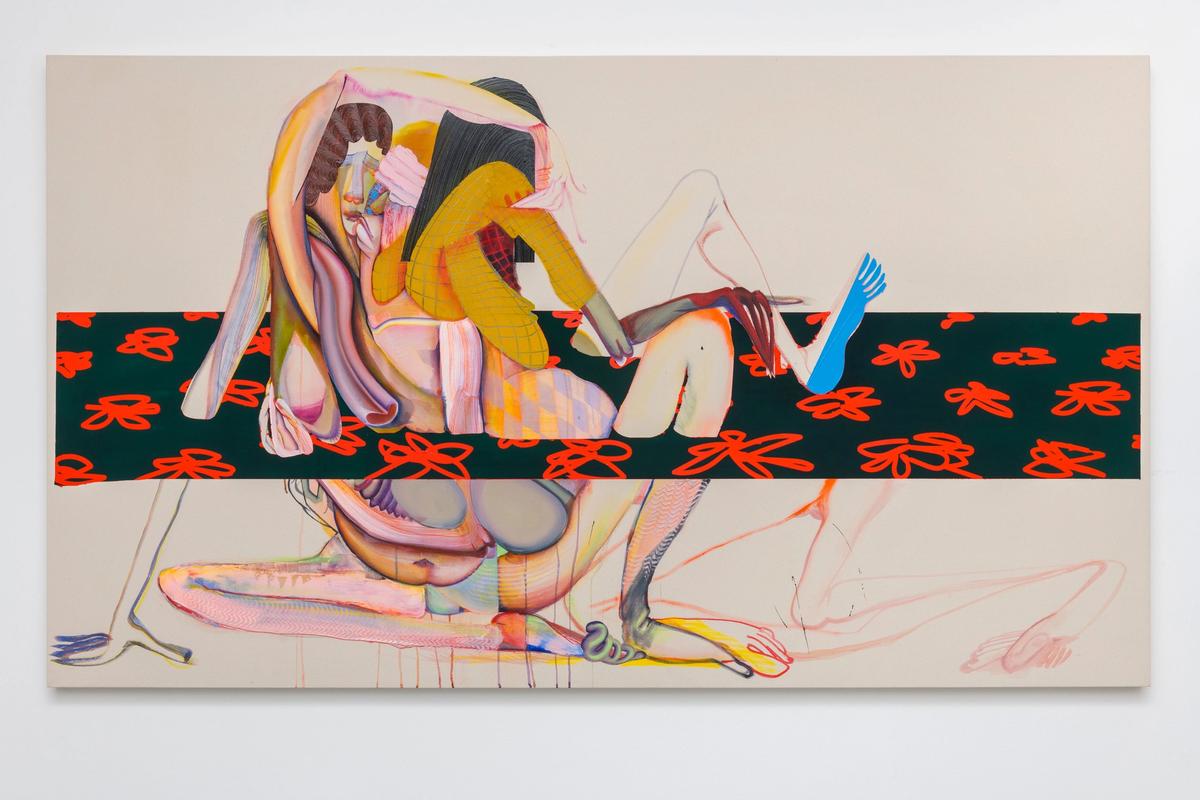More than a year after it was originally scheduled to run, Christina Quarles’s solo exhibition of recent paintings and new drawings opens at the South London Gallery this week. It is the Los Angeles-based artist’s first show in an institution in the UK capital.
The works bookend the coronavirus pandemic. The canvases were all created in 2018 and 2019, three specifically for her 2019 show at the Hepworth Wakefield, which organised the South London Gallery presentation, while the pen and ink drawings were all produced this year as lockdown measures began to ease.
Quarles has described her paintings as a kind of portraiture, of what it means to live in a body rather than look at one, and her fractured, fluid figures often embody a spectrum of identities—both male and female, self and other. “I’m interested in these ideas of how to depict what it is to be in a gendered, racialised or queer body, and how my feelings and experience of these aspects of my identity aren’t necessarily a static image,” she says.
As such, all eight paintings on show in London use framing devices or architectural components to express a tension between what is interior and what is exterior. Curly privet hedges make an appearance in Sumday (We Gunna Rest on) Sunday (2019) and Casually Cruel (2018), acting as boundaries that can also be seen through or transgressed. The latter work was painted over the summer of 2018, as horrific stories about the separation of children from parents at the US-Mexico border were dominating the media. Orange checkerboards and dogtooth patterning cut through other paintings.
The series of drawings on display, each of which convey a sense of being hemmed in, relate in some aspects to life in lockdown. In one, Well Enuff, a figure gazes out of a window at a mountain in the distance, their eyeball extended to cartoonish proportions.
Drawing has been a key aspect of Quarles’s practice, shaping the way she paints, in particular her tendency to leave expanses of raw canvas untouched. “It stems from a much longer familiarity with drawing and using negative space in the composition,” she says.

Christina Quarles, Sumday (We Gunna Rest on) Sunday (2019) Courtesy of the artist and Pilar Corrias, London. Photo: Evan Bedford
Quarles has now installed three museum shows over Zoom—one at the Museum of Contemporary Art Chicago (until 5 September)—her largest to date—and one at the X Museum in Beijing, which closed last month.
So does she miss travelling to openings? “As a younger artist, you fantasise about having these big exciting openings, but the reality is that it’s quite stressful and a little awkward,” she says. “What I enjoy most is making paintings and then having interesting, more in depth conversations that come out of studio visits or speaking to students.”
Unsurprisingly, however, Quarles believes there is no substitute for seeing works of art in person. She says: “In theory, you would think that seeing an image of an art work would be a large part of the viewing experience, but actually you lose all sense of scale and material when you are viewing on a device. Everything gets flattened.”
Organising, then having to postpone, an exhibition for so long has presented a few challenges for the SLG too. But Margot Heller, the director of the London institution, says the private lenders of works including the Abrishamchi and Ovitz families and the Aishti Foundation have been “very accommodating and incredibly supportive” in what has been the SLG’s “most challenging year ever”.
The majority of works have been stored in London since the Hepworth Wakefield show, courtesy of Pilar Corrias Gallery, which represents Quarles along with Hauser & Wirth, with just one being returned to a collection in the US which had committed to display the painting there.


